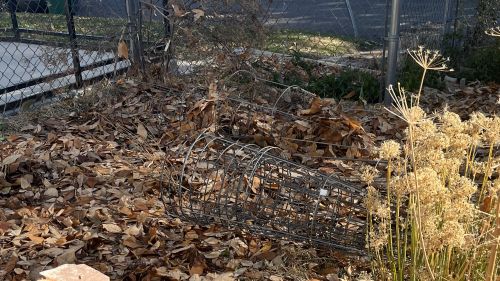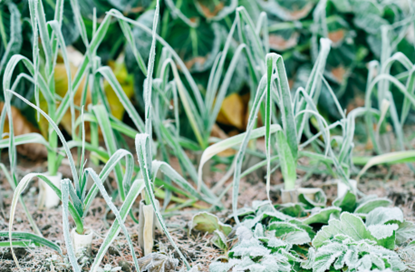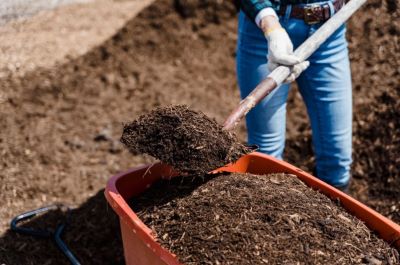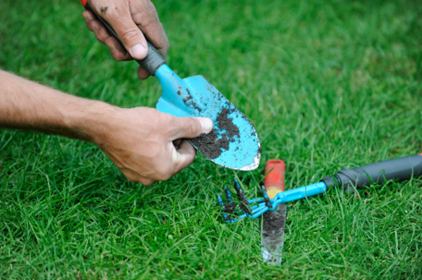Expert clean up and compost tips to get your garden rested this fall season!
Guest Contributor: Cassey Anderson, CSU Horticulture Agent


Late fall means time to put those gardens to bed, and that means cleanup and compost! November may be early or late depending on where you are but here along the Front Range in Colorado, we’ve had a very long and lingering fall which has contributed to excellent fall color and a lasting season of donation for vegetable gardens. But alas, all good things must come to an end and eventually the freezes and low temperatures will come and slow even the most productive garden. In this article we’ll discuss some best practices to set you up for a great 2024 gardening season!

Cleanup

Getting the vegetable garden cleaned up after the first frost, or the first hard frost is an incredibly important, albeit at times a difficult task. Many of us are fatigued with the garden and ready to be done and cleaning up the debris of the season feels like a lot of work without as much reward. However, it is important to remove plant material as it can harbor disease and pests from one season to the next. Good garden cleanup is an important aspect of reducing problems in your garden for next year. If you absolutely cannot face it right away and you live somewhere where snow doesn’t cover the ground from November – March you may be able to get away with some basic cleanup now and taking advantage of a winter warmup, but it’s best to get it out of the way! It is not recommended to simply turn your vegetable crop remains back into the soil as it hasn’t decomposed yet and may cause nutrient availability issues and may promote disease year over year.
Get Started Composting

So now you’ve cleaned up your garden space and you’re wondering what to do with all that plant material. If there are no signs of disease on your plants, you can use them to start some “black gold” or compost production in your very own back yard. Compost is a stable form of organic material that can slowly feed your garden plots in future years. What better way to close the cycle than to use the debris from this year’s garden to feed your future garden?
Composting is the process in which we turn living material, usually plants for backyard gardens, into that stable source of nutrients for future plants. To successfully compost you only need a few things: a container, organic material comprised of “greens” and “browns”, time, moisture, and air. There are other components such as microbes, and heat, but those come from creating the right conditions for your compost to thrive. To create compost quickly (in as little as a few months), mix about 2:1 browns to greens, and turn the pile regularly. Regularly for some may mean daily, weekly, or monthly, it all depends on how quickly you want your compost to finish. Avoid adding fats, meats, animal waste, seeds etc. Although these can break down most home compost systems do not provide sufficient heat to do so safely. Added moisture, to the level of a wrung-out sponge, can speed the process substantially. For more on making compost check out our Composting 101 blog post, and this helpful handout from CSU extension.
Adding Amendments
So, you already compost, or you’ve got a great source of compost to amend with, what are the best practices? Amendment is one place in which the idea that “a little is good; a lot is better” is not true. The goal is to get your garden soil to about 4-5% organic matter, which really isn’t a whole lot. This means if you’re working a new bed, you may amend 1-3” of material 6-12” deep. If you have an established bed and you amend regularly you may not need to add anything at all. The best way to determine if you need to amend is to do a lab-based soil test. The chart below comes from our fact sheet "Choosing a Soil Amendment."

Tool Management

Late fall is a great time to take the time to examine and prep your garden tools for next season.
It’s always a good idea to start by cleaning off any caked-on mud or dirt that may be hiding blemishes or lead to rusting and other damage over the winter season. Once your tools are cleaned, check if they need to be sharpened. You can learn to sharpen tools yourself or see if there are locals in your area who will sharpen your tools as well. If you use loppers or pruners, you may be able to replace the blades if they have been nicked or damaged too much. Finally, a thin layer of oil over the metal surface can protect from rust and humidity over the winter season. Store your tools in a dry area if possible.
Finally, if you’ve checked everything else on this list off, or are just plain tired of the garden you can always resort to planning next year!
As always, reach out to your local Extension office with additional questions and for further resources. Happy Gardening!

Gardening in Colorado? Check out Grow & Give and in particular our Colorado Vegetable Guide for more crop information on all of the above plants.
What if every gardener shared just a little?
One small donation can have a tremendous impact. Just imagine, if every gardener planted one extra plant to share, or donated just a pound from the garden. Collectively, we would have an abundant source of fresh, healthy produce available to be distributed to families experiencing food insecurity in our own communities! The free Fresh Food Connect mobile app connects you to a local hunger relief program, then manages and tracks your donations of homegrown produce throughout the season. Download the app today!